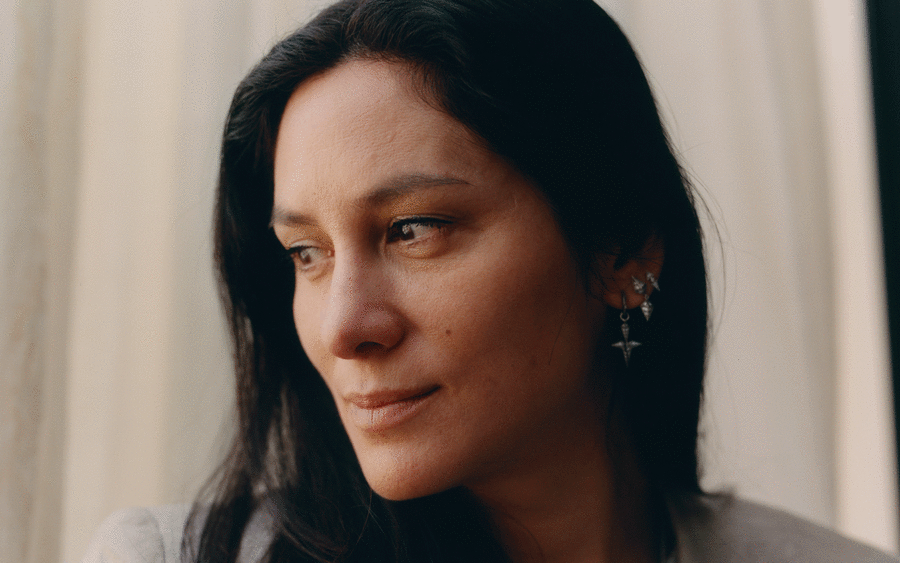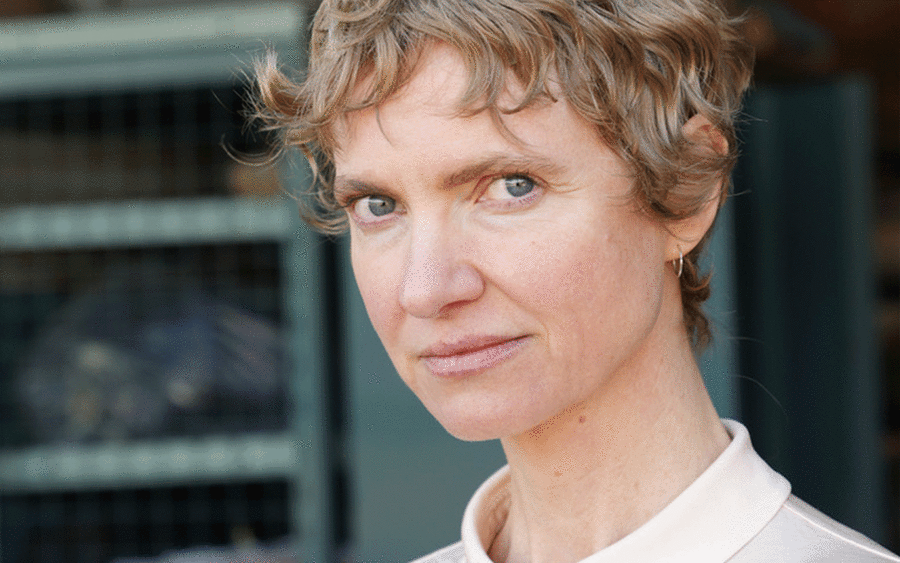Many galleries turn a significant anniversary into an excuse to make some noise. But Thomas Dane celebrated his 20 years in the business this year with an intimate dinner at the home of his gallery director (and partner in the company), François Chantala, who did the cooking.
Since he put his name above the door at 11 Duke Street, a discreet building in London’s traditional gallery quarter of St James’s, Dane has conducted his affairs quietly. He shows at Art Basel in Basel and Hong Kong, has a presence at Frieze, and has shown at Frieze Masters in the past. But the rest of the year, his focus is on his artists, who include Steve McQueen, Lynda Benglis, Cecily Brown, Catherine Opie, and the estates of Marisa Merz and Bruce Conner – so there is plenty to do.
Dane opened the gallery in 2004 with François Chantala and Martine d’Anglejan-Chatillon, who later became partners in the business. From the start, it was clearly a little different. 11 Duke Street is an intact 18th-century house, entered through its original door. It is attached to a 19th-century mansion, which contains a larger gallery. (Dane himself lives in an enclave of 18th-century houses in London’s Marble Arch area.) ‘We still have this space because the artists love it for not being a typical white cube,’ he says. In 2011, however, the gallerist added an airy modern ground floor venue at 3 Duke Street, but then defied convention again in 2018, taking on a historic palazzo in Naples with views over Vesuvius in one direction and the Bay of Naples in the other.
‘The Naples gallery is not driven by sales,’ says Dane. ‘It’s a place to look after people, and our building looks onto two of the greatest views in the world.’ The extraordinary archaeological sites of Pompeii and Herculaneum – and the beach – are also in easy reach. Last summer, Opie filled the gallery’s elegant piano nobile rooms with her personal take on the transgressive nature of the Vatican: close-ups of saintly blood and images of soaring defensive walls. Other artists simply come to stay and enjoy the city.
Dane’s career as a contemporary art gallerist was not inevitable. Although he studied 17th-century Spanish art and the Italian Renaissance – and John Armstrong, a respected Surrealist painter and muralist, was a family member – his father was a scientist. But as soon as he graduated, the young Dane got involved in London’s increasingly heated art scene. He helped organize Damien Hirst’s show ‘In and Out of Love’ in 1991 in London’s Mayfair, which included a room of live butterflies, and to build collections for Evelyn de Rothschild, Dimitris Daskalopoulos, and fashion magnate Peter Simon. He set up Ridinghouse, an art-book publisher, in 1995, with the famed art dealer Karsten Schubert, and was involved with Michael Landy’s much-talked-about Break Down in 2001, in which the artist publicly destroyed every single item he owned with machinery installed in a decommissioned department store in London’s Oxford Street.
That same year, Steve McQueen (who had won the Turner Prize in 1999) asked Dane to represent him. ‘It was entirely his choice, not mine!’ says Dane; eventually he built a gallery around McQueen. The first exhibition at 11 Duke Street was a solo show by the then fast-rising artist called ‘Into This World’ – the opening words of Samuel Beckett’s play Not I (1972) – and featured a 15-minute video and a slide projection. ‘It confused people that I opened a gallery with an artist of Steve’s stature. I had changed direction a few times, and worked on the secondary market. It wasn’t obvious who or what I was. To be honest, I didn’t know what I was doing either,’ says Dane now. ‘It’s incredibly hard running a primary market gallery, and I didn’t understand quite what the costs would be.’
Finding artists to set around McQueen was hard, too. London had become a competitive hothouse for contemporary art. But many of the early artists are still with the gallery. ‘For a core group, it feels like a family,’ says artist Anya Gallaccio who joined at the beginning. ‘He works quietly, and he doesn’t burden his artists with the weight of the market. He’s a quiet, private, generous person, very invested in making beautiful shows. At times, the gallery feels more like a kunsthalle with little or no commercial agenda.’
It is, indeed, noticeable that Dane does not lose interest in his artists when the world is paying less attention. He appears to believe in the cyclical nature of things. Take the American artist Paul Pfeiffer – with Dane since the start of the gallery – who has emerged from a quiet patch to have a hugely successful show at The Geffen Contemporary at MOCA, Los Angeles (on view until June 16, 2024) and a strong participation in Julie Mehretu’s exhibition ‘Ensemble’, currently at the Palazzo Grassi in Venice and on view until January 2025. ‘It’s important to stick by artists when they fall out of focus,’ says Dane. ‘It can be an important part of what they do. And it’s so satisfying when they come back round.’
Dane believes in the long game, establishing relationships with dedicated philanthropic collectors and museums. In 2010, he was part of a team that set up the Moving Image Fund, to raise money to help institutions collect film. Its first acquisition was Isaac Julien’s Ten Thousand Waves (2010) which went into the joint ownership of two regional British museums.
‘Part of the art market now is all about speed, and about making fast judgements online,’ he says. ‘But we don’t deal in that sort of volume.’ Instead, he puts in the time and the legwork – and does not hesitate to take risks. ‘We took a Susan Rothenberg painting from the 1990s to Art Basel in Hong Kong,’ he says by way of an example. ‘It’s a really strong painting but it would never have sold by JPEG. Now, it’s gone into a significant private collection of Chinese and Western art. The business I’m in is both instinctive and experiential.’
‘The collector numbers in London haven’t necessarily grown,’ he continues, reflecting on the post-Brexit status of the British capital’s art scene. ‘But London galleries are still very reliant on its centrality as a city – as well as on working abroad. You need to be interested in territories that are developing, like Hong Kong.’ He mentions how much more complicated it is to take a show to Naples now, and how it often involves a substantial deposit that will be refunded after the work’s return. ‘But we did that with a huge Cecily Brown painting called The Triumph of Death (2022),’ he recalls. It had been temporarily installed in Blenheim Palace in late 2020 and seen by few. Dane pulled a few strings and got it into the Capodimonte Museum, a spectacular Bourbon palazzo in Naples where it hung among Titians. It now belongs to a serious collector in Asia and Dane is most likely – and very quietly – very pleased indeed.
Thomas Dane Gallery will participate in Art Basel in Basel 2024. Learn more about the show here.
Caroline Roux is a London-based writer and a regular contributor to the Financial Times, The Art Newspaper, and Galerie magazine.
Caption for top image: Thomas Dane. Photograph by Amedeo Benesante.


